Additive Manufacturing at HP: A new ‘centre of excellence’ supports the move to volume production
On June 12th, HP Inc. formally opened its new 3D Printing and Digital Manufacturing Center of Excellence at its campus in Barcelona, Spain. Metal AM magazine’s Emily-Jo Hopson attended the event and here reports on the 14,000 m2 facility’s opening and the company’s rapid rise in the world of Additive Manufacturing. She reveals how, whilst the company is not traditionally associated with equipment for industrial manufacturing, many of its core technologies directly lend themselves to a new generation of metal binder jetting systems. [First published in Metal AM Vol. 5 No. 2, Summer 2019 | 15 minute read | View on Issuu | Download PDF]
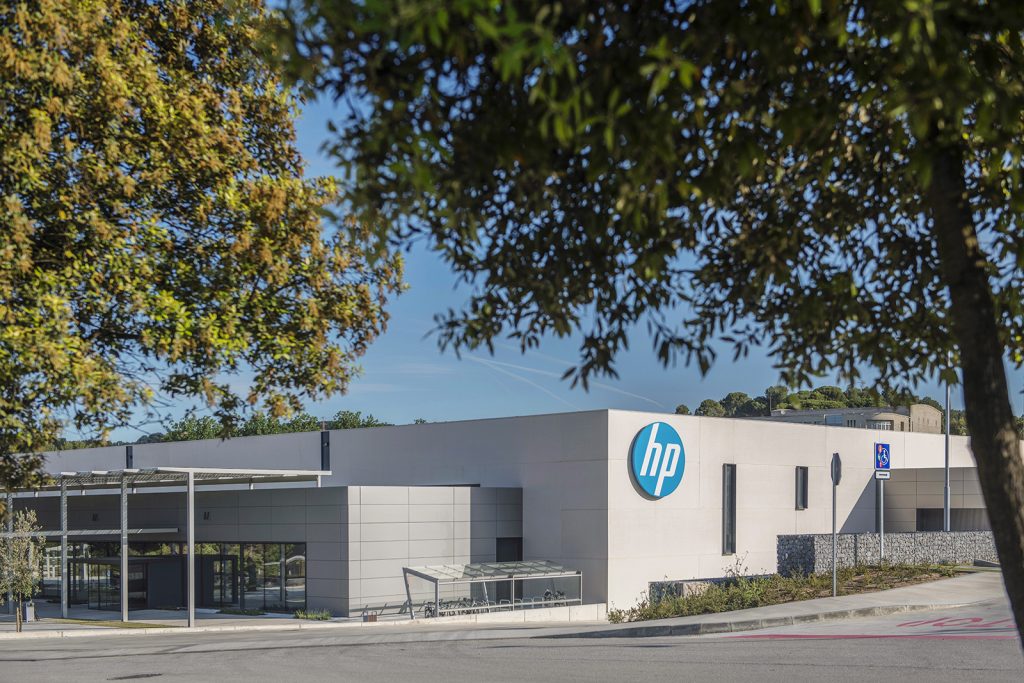
From June 11–13, 2019, HP Inc. welcomed members of the global press and analysts to the opening of its new 3D Printing and Digital Manufacturing Center of Excellence at its campus in Barcelona, Spain. Serving as a global hub for HP’s Additive Manufacturing and Large Format Printing businesses, the Barcelona campus employs some 2300 staff, among them more than 700 research and development engineers, and supports twelve of HP’s diverse businesses across ten buildings. On average, the campus’s R&D staff are credited with filing more than one hundred patents per year.
The new 3D Printing and Digital Manufacturing Center of Excellence comprises what HP’s campus staff call ‘Building 10’, and is solely dedicated to R&D activities in Additive Manufacturing, supporting both HP’s well-established polymer AM Multi Jet Fusion business and the development of its new Metal Jet technology and applications. Housing roughly one-hundred Additive Manufacturing machines, the opening of the centre coincided with HP’s 80th anniversary year since its founding by two friends in Palo Alto, California, USA, and marks a strong commitment to the future of the company’s business in digital manufacturing technologies.
Spanning 14,000 m2, the centre marks not only HP’s investment in the development of its business, but also shows a considerable commitment to sustainability, producing more than 110 kW of photovoltaic power through a large canopy of solar cells, integrating rain water reuse facilities for irrigation and sanitary purposes, as well as making use of natural light optimisation and eco-friendly construction. At a company level, HP stated that its goal is to use 100% renewable energy in its global operations over time, with a target of 60% by 2025.
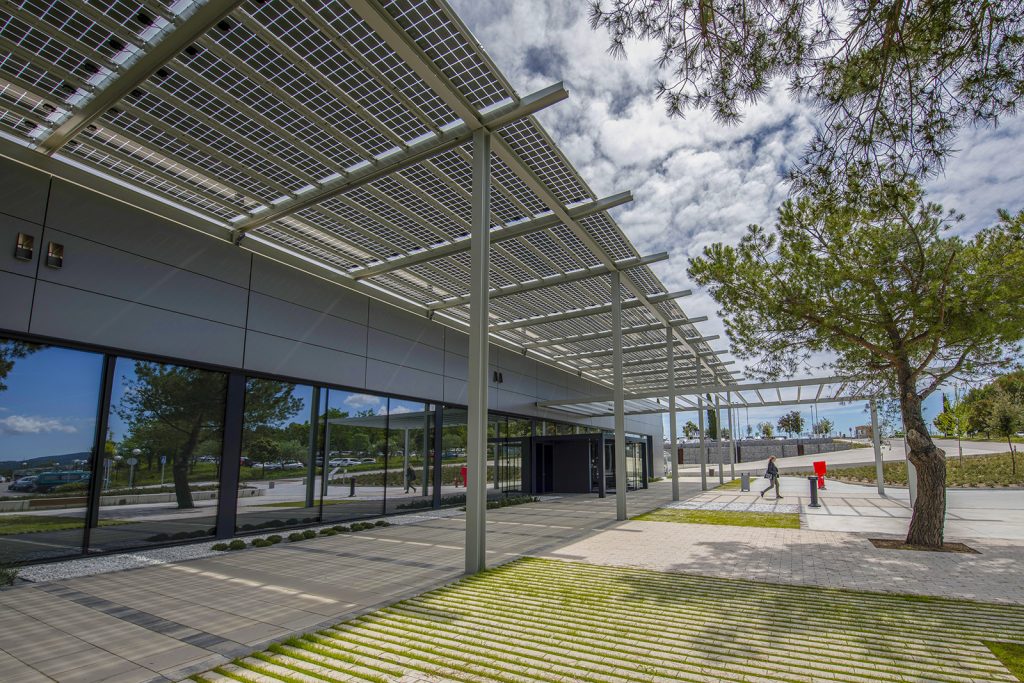
Throughout the event, HP Barcelona’s management team was keen to impress upon its guests the importance of the new centre’s opening within the wider context of HP’s history. The launch provides a significant expansion to the company’s existing R&D capabilities in Corvallis, Oregon, USA; Palo Alto, California, USA; San Diego, California, USA; Vancouver, Washington, USA; Barcelona, Spain; and Singapore. Upon its opening, it already unites hundreds of experts in systems engineering, data intelligence, software, materials science, design and digital manufacturing in what is believed to be the world’s largest ever concentration of Additive Manufacturing specialists in one location.
“HP’s new 3D Printing and Digital Manufacturing Center of Excellence is one of the largest and most advanced 3D printing and digital manufacturing research and development centres on earth,” stated Christoph Schell, President of 3D Printing and Digital Manufacturing at HP Inc. “It truly embodies our mission to transform the world’s biggest industries through sustainable technological innovation. We are bringing HP’s substantial resources and peerless industrial 3D printing expertise together with our customers, partners and community to drive the technologies and skills that will further unleash the benefits of digital manufacturing.”

Specifically designed for active collaboration across HP’s engineering and R&D groups, customers and partners, the new facility integrates flexible and interactive layouts, co-development environments and fleets of the latest HP metal and plastic Additive Manufacturing systems to drive rapid and agile product development and end-to-end solutions for its customers. Partners such as GKN Powder Metallurgy, Siemens, BASF, Volkswagen and others across the automotive, industrial, healthcare, and consumer goods sectors will continue their collaborations with HP on new AM and digital manufacturing innovations at the centre.
An in-depth look at the HP Metal Jet
Being historically focused on computing and 2D printing solutions, HP’s background in Additive Manufacturing is relatively short, having announced its intention to move into the space in 2015, launching its first Multi Jet Fusion system for polymer AM in May 2016 and establishing its HP 3D Printing brand in 2017. By 2018, the company was ready to expand its portfolio of polymer AM systems and, in 2019, the focus has been on accelerating and verticalising this portion of the business. The wealth of experience and customer faith HP has built up over this short period is considerable, and it now claims that its Multi Jet Fusion customers are producing, on average, ten million plastic parts a year.
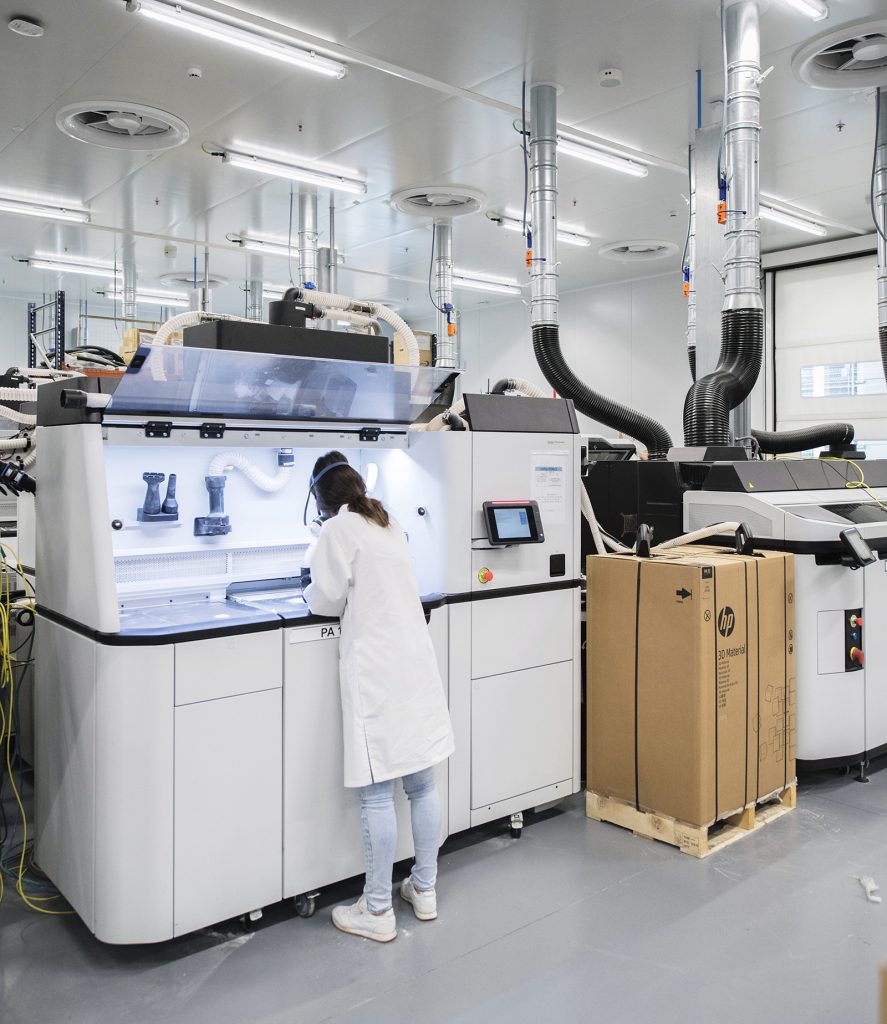
Following HP’s entry into polymer AM, it did not take long for speculation to begin on whether the printing giant would ever make the leap into metal Additive Manufacturing, and in October 2017, Stephen Nigro, then HP’s President of 3D Printing (since retired), revealed the development of a metal AM approach which he called “a major step for HP 3D printing aspiration.” This approach was, of course, Metal Jet, HP’s take on binder jetting.
The first Metal Jet system saw its official launch less than a year later in September 2018, at the International Manufacturing Technology Show (IMTS) in Chicago, Illinois, USA. HP also announced during the launch partnerships with GKN Powder Metallurgy, the world’s largest Powder Metallurgy components producer whose operations include a major Metal Injection Moulding plant in Bad Langensalza, Germany, as well as extensive metal powder production facilities, and US-based MIM pioneer Parmatech.
These were the first companies to integrate the new systems at their facilities for parts production, enabling their customers to benefit from the capabilities and production volumes offered by binder jetting, and providing vital feedback to enable HP to develop and finalise its design.
In Barcelona, attendees were for the first time able to see Metal Jet systems in action in HP’s Process and Applications Development Lab. In a presentation by Tim Weber, Global Head of 3D Metals for HP, the machine and its technology were reviewed in-depth. Setting the Metal Jet apart from other Binder Jet solutions on the market, Weber stated, is HP’s use of its well-established PageWide inkjet technology, optimised over the course of its thirty years in 2D printing and installed across all of the company’s 2D and 3D printers, and its over ten years of expertise in latex technology.
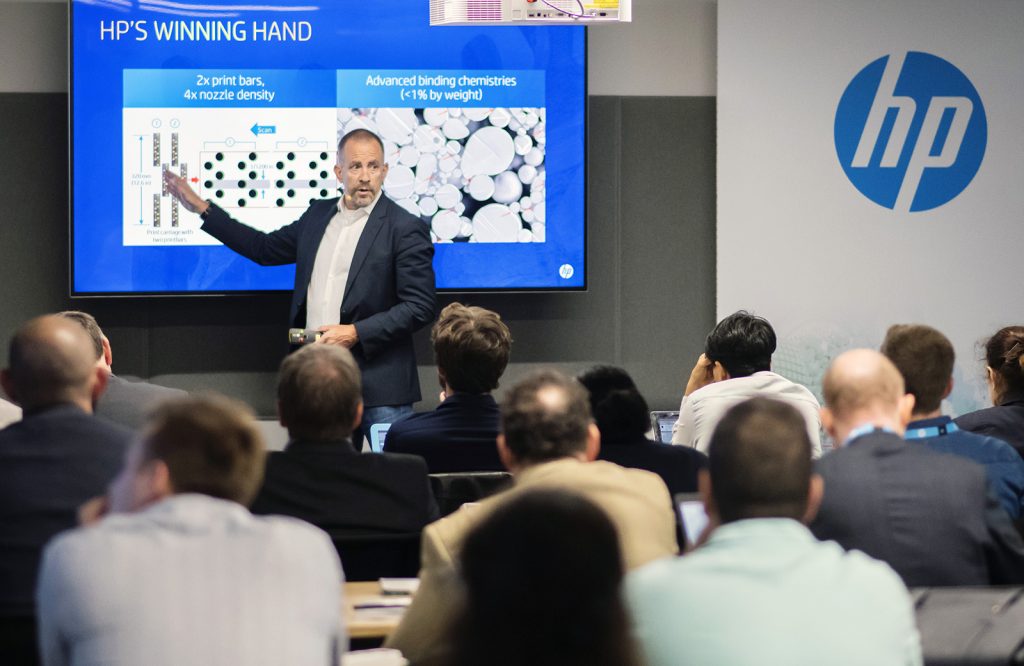
Tried and tested printhead technology
As a manufacturer of digital (2D) printers, Weber stated, HP is number one or two globally in almost every price category, from $100 to $10 million. “We build 25 million printers a year,” he stated, “and use the same printhead technology in every single product. So we have the ability to make them, make them quickly and make them at incredibly low cost.” This means, he explained, “I can double or quadruple up my nozzles for redundancy, for productivity and to improve the system very cheaply. If they break, they’re very easy to replace.” Decades of design optimisation and the low-cost of installing multiple, high-density inkjet nozzles per machine is reported to enable the Metal Jet system to achieve jetting speeds of around fifty times faster than HP’s competitors.
A unique latex-based binder system
The advanced latex chemistries developed by HP lend significant benefits to the binder itself. Originally developed for use in signage and having the ability to adhere to glass, vinyl, or metal, Weber describes HP’s proprietary long-chain polymer latex glue as “the world’s best binder for gluing metal powder together.”
By using its proprietary latex glue, HP is reportedly able to use twenty times less binder than typically employed in MIM, resulting in a green part chemistry of < 1% binder by weight. “This allows us to skip the debinding step,” Weber explained, “which enables us to produce larger parts, due to the open pore structure for when you do remove the binder.”
Driving productivity and cost-effectiveness
With its stackable build chamber of 430 x 320 x 200 mm, the system offers the capacity to additively manufacture hundreds (if not thousands) of parts in a single batch. The first materials available for use with the Metal Jet system are 17-4PH and 316L stainless steels, with finished parts said to deliver isotropic properties that meet or exceed ASTM and MPIF Standards for tensile strength, yield strength and elongation. Weber stated that the company’s goal is to make low-alloy steels – “the workhorse of the automotive industry” – available for its Binder Jet process.
In addition to productivity, a major focus throughout the ongoing development of the Metal Jet system has been on cost-effectiveness. “When we started the investigation and HP was getting into this, we recognised that to build this business it was not just about prototyping, it was about manufacturing,” stated Weber. “In order to get into manufacturing, one thing that is absolutely key is economics. If you don’t have a cost-effective part, you are not going to get into manufacturing unless it’s a very high value application.”
HP has designed the Metal Jet system for cost-effectiveness in two key ways: by using ‘off-the-shelf’ Metal Injection Moulding powders, available at much lower costs than existing metal AM powders, and by developing a system which will be available to purchase for less than $400,000, in a market where the majority of metal AM systems carry price tags of $500,000 +. “If you combine off-the-shelf powder with a low-cost printer with this kind of productivity, you end up with a cost-effective solution that will enable folks to get into manufacturing even before beginning to take full advantage of what 3D printing brings to the table,” Weber stated.
Strategic alliances driving development in the right direction
Of course, the focus cannot be placed wholly on speed and affordability, both of which mean little without a quality output. While Weber believes that HP is the world’s best printing company, he admitted, when explaining the decision to partner with Volkswagen, GKN Powder Metallurgy and Parmatech for the development and customer testing of its Metal Jet systems, that “we don’t know much about making metal parts, we don’t know much about making automobiles, and we don’t know much about how to produce metal powders.”
Since forming these partnerships, HP has produced and installed multiple Metal Jet machines and has already begun to make progress on its production service, developing applications for customers including and beyond Volkswagen. “Typically, that might be a two-year development cycle from the point of conception to the point you want to go into production,” Weber stated; “you iterate, you go back and forth. But this partnership allows us to do this with our partners, with a clear path into manufacturing as we develop the final product.”
“We are learning a ton with our partners,” Weber commented. “The final product is going to be a lot more robust, a lot more ‘sealed up’ relative to regulations, and a lot more ready for automation and factory integration. If we hadn’t made these partnerships, if HP had done it alone from the beginning, this product wouldn’t be half as good.”
Guido Degan, Senior Vice President Additive Manufacturing and Business Development at GKN Powder Metallurgy, and Sven Crull, Volkswagen’s Head of Design for New Manufacturing Technologies, joined Weber for a panel discussion during the opening event in Barcelona.
GKN Powder Metallurgy consists of GKN Hoeganaes, GKN Sinter Metals and GKN Additive and provides metal powders, conventional PM components and Additive Manufacturing across thirty-four global locations. The company produces some 300,000 tons of metal powder annually – considerably more than the 2,000 tons of metal powder currently produced for the Additive Manufacturing market worldwide – as well as 20 million precision Powder Metallurgy parts per day. As a producer of both metal AM powders and parts, the company has much to gain from the scaling up of the AM metal powder market and has previously made substantial investments in the industrialisation of Additive Manufacturing, notably as the first automotive supplier to begin series production using metal AM. In the first half of 2019, it began to supply its first customers with industrial-grade AM parts using the HP Metal Jet.
While GKN Powder Metallurgy is one of many manufacturing businesses with a stake in metal Additive Manufacturing, and certainly not the only one with the ability to supply AM parts to its customers, Degan expressed his belief during the partner panel that the sheer scale of its operations, combined with its in-depth expertise, puts the company in a unique position for scaling new manufacturing technologies. “We have more than three thousand customers around the globe, we know what they want, and we know how to influence materials,” he stated. “We offer the whole value chain from materials design to manufacturing services.” Now, he stated that GKN’s focus is on scaling metal AM technology for true production, with a focus on the automotive and other industrial sectors.
Asked why GKN Powder Metallurgy chose to pursue this goal in partnership with HP, Degan explained that, while the company had already gained experience in laser-based Additive Manufacturing technologies, it had considered Binder Jet as being ‘a bit out there.’ However, when approached by HP and after a visit to the company’s Corvallis facility, Degan stated that it became clear that HP was approaching metal AM at the right scale and with the right mindset. “For us, as a mass production manufacturer, it was this mindset that was the biggest motivation to say yes to a great partnership.”
Volkswagen’s Crull discussed the partnership with HP from the same perspective of scale, stating his belief that the scaling up of metal AM for production will only be successful if processes and parts are developed in parallel. One key reason for this which Crull spoke of is the importance of regulations in automotive parts manufacturing. By developing the Metal Jet process with key target industry regulations in mind, in partnership with Volkswagen and major automotive supplier GKN, all three companies hope that HP can build trust within highly-regulated industries for as smooth a transition as possible from prototyping to production.
“We don’t know anything about AM technology or the behaviour of AM parts in a car,” Crull explained. “It’s much harder to push technologies into the market which are not designed for it.” It makes sense, then, to design the Metal Jet as an automotive-ready production technology, while at the same time designing automotive parts which are ready for production by AM.
“One of the reasons HP chose partners like GKN and Volkswagen is because we’re getting into a space where we know nothing about the regulations,” Weber added, “and we want to work with folks who are at least knowledgeable about what the current regulations are. This is also why we’re working toward meeting those regulations that exist rather than creating special new ones for our technology.”
An end-to-end solution for the rapid acceleration of metal AM
This holistic view of AM’s acceleration and industrialisation was echoed throughout the event. Earlier in the programme, Christoph Schell spoke to guests about the importance of the entire digital manufacturing ecosystem to the wider adoption of AM.
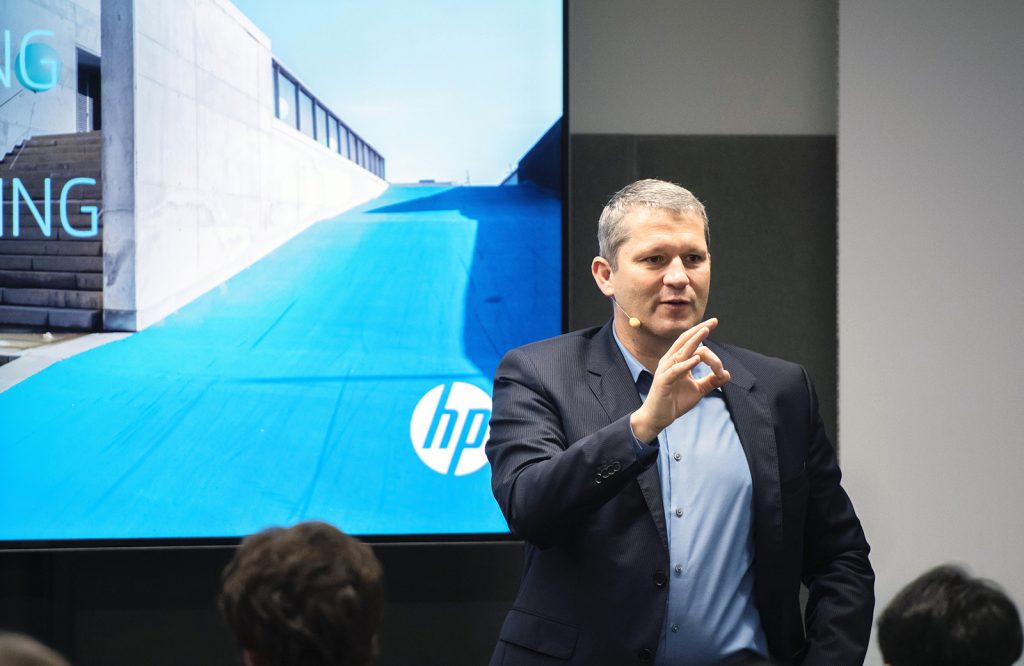
Through providing ongoing support to its Multi Jet customers, and through continuing collaborations with universities and research institutes, HP has gained a thorough understanding of the AM value chain. It has come to understand that to accelerate the transformation from a small-scale prototyping technology to a production-ready solution, HP must make available to its customers an ecosystem which can provide end-to-end solutions, a digital manufacturing network and digital manufacturing integrations; productivity, quality and performance in the machines it provides; a robust architecture of data intelligence and software solutions; in-house materials innovation, and customer support.
By integrating with partners with the capabilities to provide support at all levels of the digital manufacturing ecosystem, as well as developing those aspects it can in-house and providing extensive support through customer experience centres such as Barcelona, HP believes it holds the keys to allow AM to make major inroads from prototyping into industrial applications. As a company with proven experience of rapidly scaling new technologies in a changing industry – it was already producing millions of 2D printers before the year 2000 – HP may have the resources at hand to buck the much-bemoaned trend of slow time-to-market for new metal Additive Manufacturing technologies.
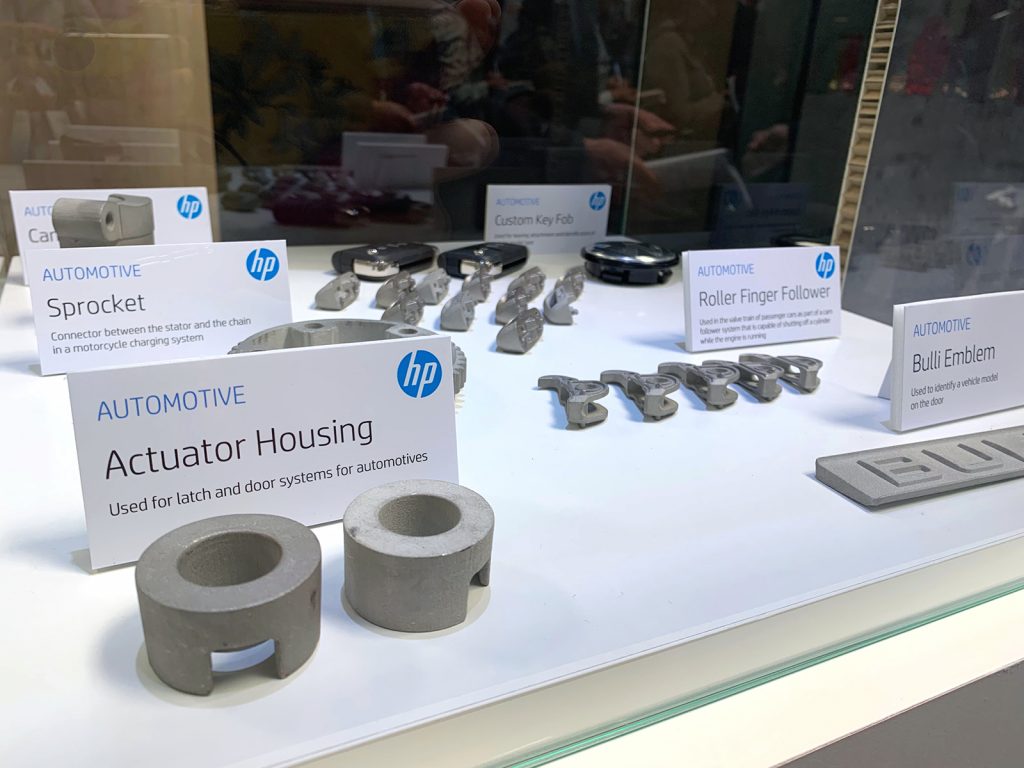
When the HP Metal Jet was officially announced at IMTS 2018, the company forecast wide commercial availability coming in 2021, with select availability set for 2020, but in his welcome address in Barcelona, Christoph Schell revealed that the project is currently running ahead of its planned product cycle. “I’m very optimistic about the HP Metal Jet,” he stated. “We’re already starting to quote some customers on their needs, even with the product not being on the market yet.”
One thing was made clear through numerous comments and slides during the event: HP’s management believes the company holds “the winning hand” for the development and production of industrial Additive Manufacturing solutions. While no new technology can expect a seamless transition into the marketplace, it will be interesting to see what impact HP’s unique background, extensive alliances and in-house expertise will have as Metal Jet finds its place in the increasingly competitive Binder Jet market.
Author
Emily-Jo Hopson
Deputy Editor, Metal AM
[email protected]
www.metal-am.com







